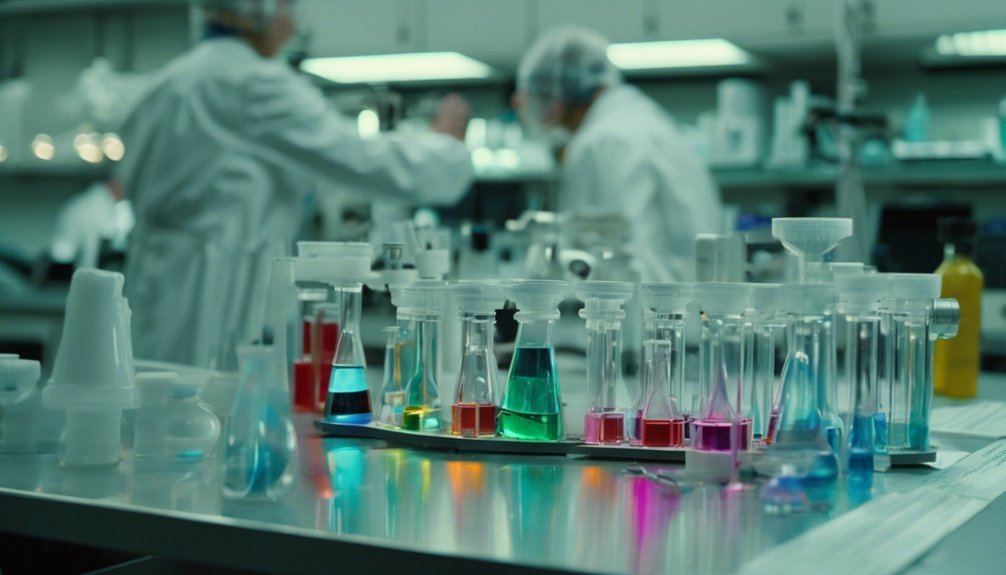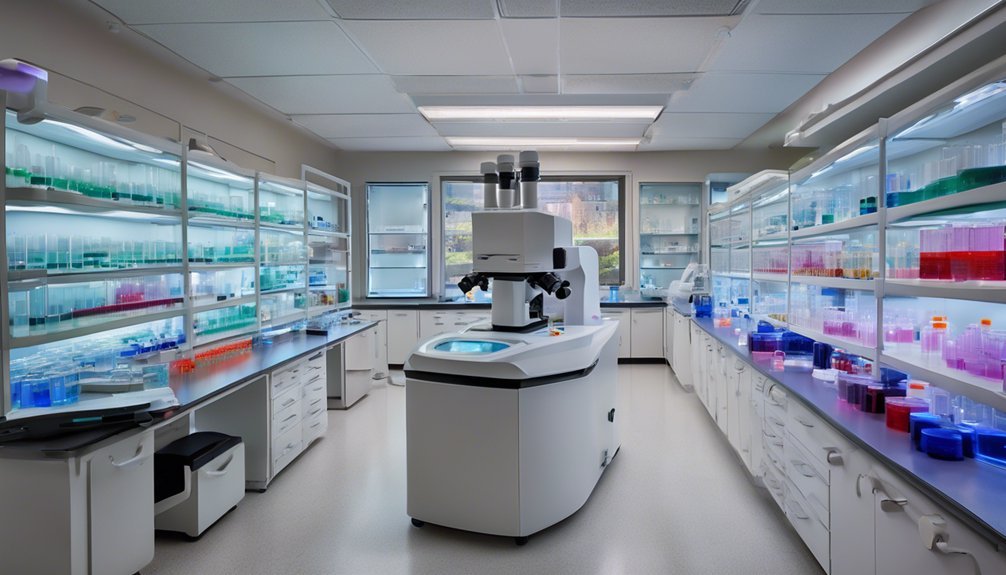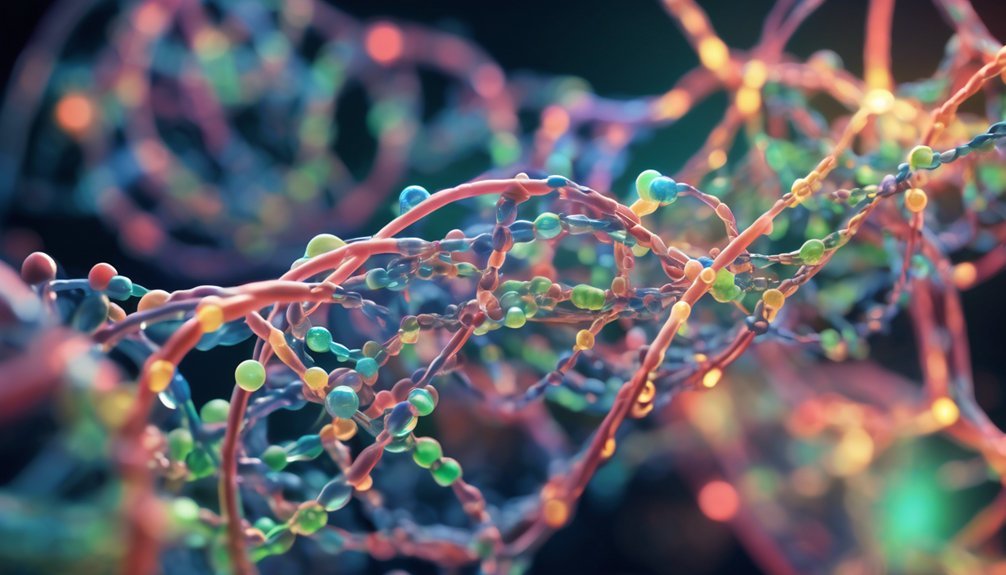Ivermectin’s potential in enhancing chemotherapy efficacy for leukemia is garnering attention in the scientific community. Studies indicate it may sensitize leukemia cells, promoting cell cycle arrest and apoptosis. This synergy could lead to reduced chemotherapy doses and fewer side effects. However, the mechanisms behind this sensitization remain to be fully understood. As research progresses, it’s crucial to explore how Ivermectin might reshape treatment paradigms for leukemia. What implications could this have for patient outcomes?
Key Takeaways
- Ivermectin exhibits potential as a sensitizer for leukemia cells, enhancing the efficacy of chemotherapy agents.
- Preclinical studies show that ivermectin promotes apoptosis and cell cycle arrest in malignant leukemia cells.
- Its immune modulation properties may boost therapeutic responses when combined with traditional leukemia treatments.
- Careful monitoring of drug interactions is essential to manage potential toxicity and optimize treatment regimens.
- Ongoing research is necessary to confirm findings and refine protocols for integrating ivermectin in leukemia therapy.
Understanding Ivermectin: Mechanism of Action
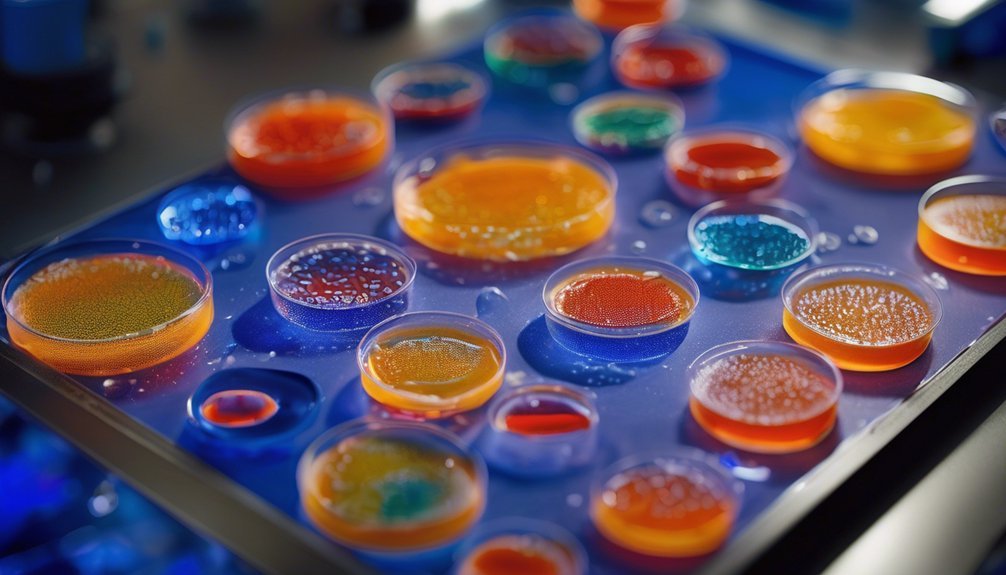
While Ivermectin is primarily known as an antiparasitic agent, its mechanism of action extends beyond that scope, revealing potential applications in oncology, including leukemia treatment.
Ivermectin pharmacology indicates that it interacts with various ion channels, particularly glutamate-gated chloride channels, leading to cellular hyperpolarization and apoptosis in malignant cells. This action may enhance the efficacy of existing chemotherapeutic agents.
However, you must consider drug interactions, as Ivermectin can affect the metabolism of certain medications, potentially altering their pharmacokinetics. Understanding these interactions is crucial when integrating Ivermectin into treatment regimens for leukemia, as it could optimize therapeutic outcomes and improve patient care.
Further research is essential to fully elucidate Ivermectin’s role in oncology and its potential benefits for patients struggling with leukemia.
The Role of Chemotherapy in Leukemia Treatment
Chemotherapy serves as a cornerstone in the treatment of leukemia, targeting malignant cells to induce remission and improve survival rates. While effective, the development of chemotherapy resistance can complicate treatment protocols, necessitating ongoing research and adaptation.
- Chemotherapy aims to eradicate cancer cells while preserving healthy tissue.
- Treatment protocols vary based on leukemia type and patient factors.
- Resistance mechanisms can include drug efflux and genetic mutations.
- Combination therapies are often employed to enhance efficacy.
- Patient monitoring is crucial for adjusting treatment plans and minimizing side effects.
Preclinical Studies: Ivermectin and Leukemia Cells
Recent preclinical studies have explored the potential of ivermectin as a treatment for leukemia, revealing intriguing mechanisms by which this antiparasitic agent may affect malignant cells.
Researchers noted that the leukemia microenvironment can influence ivermectin resistance, highlighting the importance of context in treatment efficacy. Notably, ivermectin exhibits potential for drug synergy when combined with traditional therapies, promoting cell cycle arrest and activating apoptosis pathways.
Additionally, its immune modulation properties may enhance therapeutic responses. Understanding the pharmacokinetic profiles of ivermectin allows for optimized combination therapy strategies, potentially overcoming resistance mechanisms.
These findings underscore the necessity of further investigation into ivermectin’s role in leukemia treatment, as it could provide a novel approach to improve patient outcomes and therapeutic effectiveness.
Enhancing Chemotherapy Efficacy With Ivermectin

Ivermectin’s potential to enhance the efficacy of conventional chemotherapy in leukemia presents an exciting avenue for improving patient outcomes. By assessing the synergy between ivermectin and standard chemotherapeutic agents, you can identify optimal ivermectin dosage strategies to maximize therapeutic effects.
- Ivermectin sensitizes leukemia cells to chemotherapy.
- It may reduce required doses of conventional drugs.
- Enhanced treatment responses could lead to improved survival rates.
- Combination therapies can minimize side effects.
- Ongoing research is critical for clinical applications.
Understanding these factors can empower you to advocate for innovative treatments that could significantly benefit patients struggling with leukemia.
Potential Mechanisms of Sensitization
Understanding the potential mechanisms by which ivermectin sensitizes leukemia cells to chemotherapy is crucial for optimizing treatment strategies.
Ivermectin interactions may target specific cellular pathways involved in drug resistance, enhancing the effectiveness of conventional agents. By modulating immune responses, ivermectin can alter the tumor microenvironment, promoting a more favorable setting for chemotherapy action.
Ivermectin targets drug resistance pathways and modulates immune responses, creating a favorable environment for chemotherapy efficacy.
These immune modulation effects may also contribute to synergistic effects when combined with chemotherapeutic agents, maximizing therapeutic outcomes. Additionally, ivermectin’s ability to affect molecular targets associated with apoptosis and cell proliferation provides a dual approach: increasing sensitivity to treatment while directly inhibiting leukemic cell growth.
Investigating these mechanisms can help refine therapeutic protocols and improve patient care in leukemia management.
Comparative Studies: Ivermectin vs. Traditional Agents
While traditional agents have long been the cornerstone of leukemia treatment, emerging comparative studies reveal that ivermectin may offer unique advantages.
These studies suggest that ivermectin efficacy could enhance treatment outcomes when combined with conventional therapies.
Key points include:
- Improved Sensitization: Ivermectin may sensitize leukemia cells to chemotherapy.
- Reduced Comparative Toxicity: Preliminary data indicate lower toxicity profiles compared to some traditional agents.
- Synergistic Effects: Ivermectin could work synergistically with established drugs, increasing effectiveness.
- Enhanced Quality of Life: Patients might experience fewer side effects, improving overall quality of life.
- Promising Results: Early trials show encouraging results in survival rates.
As you consider these findings, the potential for ivermectin to transform leukemia treatment becomes increasingly compelling.
Safety and Toxicity Considerations
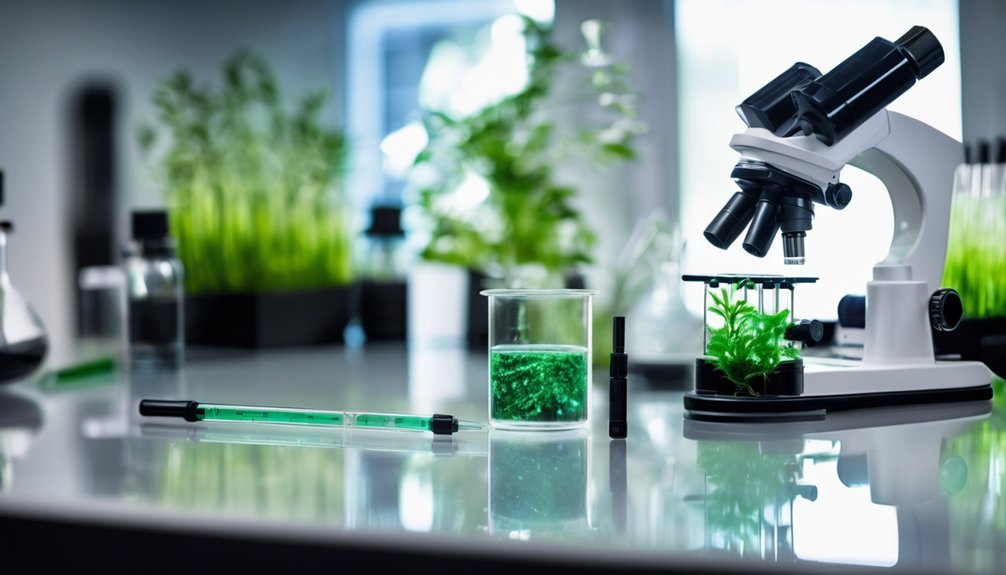
As you explore the safety and toxicity profile of ivermectin in leukemia treatment, it’s crucial to consider both its therapeutic potential and associated risks. Recent safety assessments indicate that while ivermectin has a favorable toxicity profile in many contexts, its application in leukemia warrants careful evaluation.
Preclinical studies show minimal adverse effects at therapeutic doses, but potential interactions with chemotherapy drugs could elevate toxicity levels. You must also consider the unique patient factors, such as age and comorbidities, that may influence safety outcomes.
Monitoring for side effects is essential, as understanding the nuances of toxicity profiles will guide your decisions in optimizing treatment while minimizing harm. Balancing efficacy with safety ensures the best possible outcomes for those you serve.
Future Directions in Leukemia Research
With ongoing advancements in molecular biology and genomics, future directions in leukemia research hold significant promise for improving treatment outcomes.
Researchers are focusing on innovative strategies to enhance patient care, including:
- Gene therapy to correct genetic mutations
- Immunotherapy approaches that harness the immune system
- Targeted treatments aimed at specific molecular targets
- Novel drug combinations to overcome resistance mechanisms
- Patient stratification based on genetic and biomarker identification to personalize therapy
Implications for Clinical Practice and Patient Care
Understanding the implications for clinical practice and patient care is essential as new research findings emerge. The potential role of ivermectin in enhancing chemotherapy effectiveness for leukemia presents both opportunities and challenges.
It’s crucial to focus on patient adherence; incorporating ivermectin could improve treatment outcomes, but only if patients consistently follow the regimen.
Furthermore, ensuring treatment accessibility is vital. If ivermectin proves beneficial, healthcare systems must facilitate its integration into existing protocols, considering cost and availability.
By prioritizing these factors, you can enhance patient care and potentially transform treatment landscapes for leukemia.
Staying abreast of evolving evidence will empower you to advocate for practices that maximize both adherence and accessibility, ultimately improving patient quality of life and survival rates.
Frequently Asked Questions
Can Ivermectin Be Used for Other Types of Cancer?
You’ll find ongoing cancer research exploring Ivermectin efficacy beyond leukemia. While preliminary studies show promise, definitive conclusions about its effectiveness for other cancer types require further investigation and rigorous clinical trials to ensure safety and efficacy.
What Is the Recommended Dosage of Ivermectin for Leukemia?
Determining the right dosage of ivermectin for leukemia requires careful consideration of treatment protocols and dosage guidelines. You should consult healthcare professionals who specialize in oncology to ensure safe and effective use tailored to individual needs.
Are There Any Known Drug Interactions With Ivermectin?
Ivermectin can interact with several drugs, affecting drug metabolism. You should be aware of potential contraindications, especially with medications that alter liver enzymes, as these interactions could impact efficacy and safety in treatment regimens.
How Long Does It Take to See Results From Ivermectin Treatment?
When considering ivermectin treatment, patient experiences vary, but results typically appear within a few days to weeks. The treatment timeline can depend on individual health factors, so monitoring progress is crucial for effective outcomes.
Is Ivermectin Approved by Regulatory Authorities for Leukemia Treatment?
Ivermectin isn’t approved by regulatory authorities for leukemia treatment. Current leukemia regulations emphasize evidence-based therapies, and while research is ongoing, it’s crucial to rely on established treatments for optimal patient care and outcomes.
Conclusion
Incorporating ivermectin into leukemia treatment could be a game changer, offering hope where traditional therapies may falter. By sensitizing leukemia cells to chemotherapy, it not only enhances efficacy but also potentially reduces side effects, painting a brighter picture for patient outcomes. As research progresses, understanding its mechanisms and optimizing its application will be vital in transforming clinical practice. With continued exploration, we may unlock new pathways to healing, illuminating the journey toward better cancer care for all.
